After interacting with our blog you should be able to:
- Identify which emotions belong in each zone
- Implement an appropriate strategy to regulate someone no matter the zone
- Use preventative strategies to mitigate unwanted behaviour
- Recognize stressors in an environment
The zones of regulation have been created to help students self-regulate. This curriculum introduces 4 zones or emotional states. The green zone is where we want to spend the most time. Green zone emotions are happy, calm, focused and proud. The yellow zone is a hyper active zone including emotions like worried, frustrated, silly and excited. The blue zone is low energy feelings such as sadness, boredom, tiredness and illness. The red zone is when we feel out of control including feelings such as overjoyed, panicked, angry and terrified (Kuypers, 2011.)
There is an appropriate time and place for each zone while most of our time should be spent in the green zone
(Kuypers, 2011.)

To regulate each zone there are appropriate activities you can do as a class or individually. To regulate someone in the red zone try exercising to burn off extra energy. To regulate someone in the yellow zone try calming activities such as breathing exercises, reading a book, spending alone time in a safe space, journaling or talking to someone. To regulate someone in the blue zone take a movement break and dance to music, go for a walk, do some stretching or yoga (Pathway2success, 2018.)
To continue learning about zones try Canva slide presentation. This slideshow is helpful to teach zones and helps choose an activity to get back into the green zone. Each zone and scenario has an activity that would work best and should be tailored to the individual. With increased exposure students will gain a tool box for self-regulation activities and can try to get back to the green zone by themselves. When asked as part of their evaluation, students should be able to provide each zone, an emotion in each zone, and a method to self-regulate and return to the green zone.
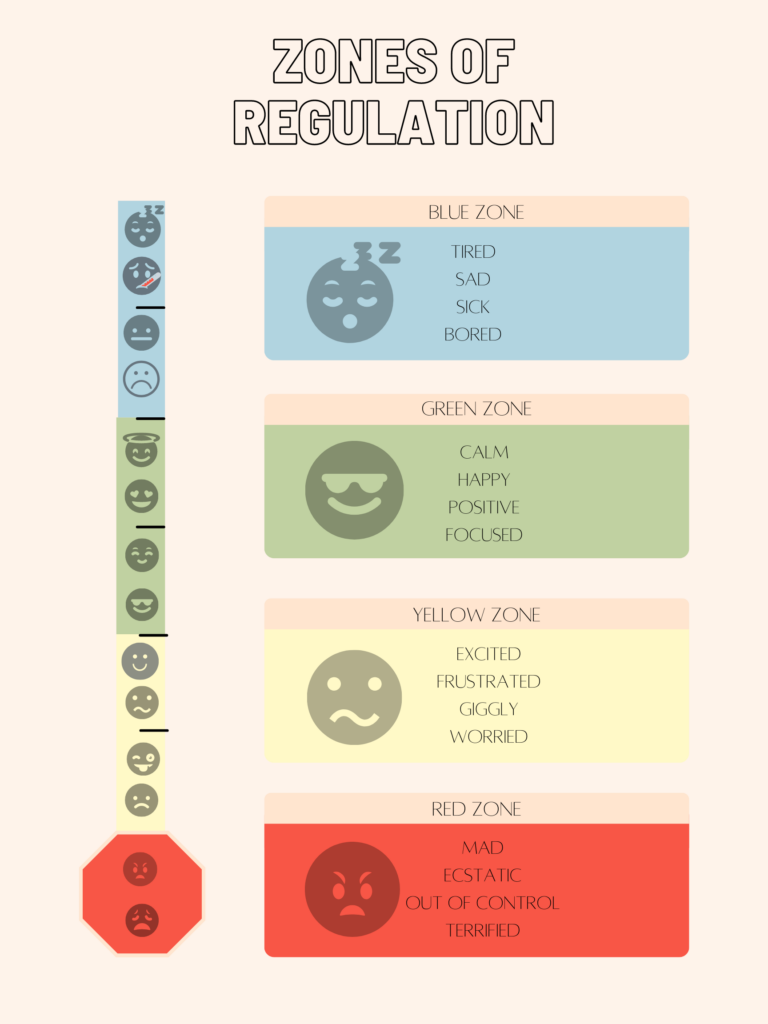
Zones of regulation help students recognize their emotion and find a strategy to regulate back into a calmer body and mindset.
When a mentally draining activity is planned such as an assessment, providing students with a mindfulness activity allows them to regulate into the green zone. This provides the highest chance of success for all students. Setting students up for success aids in retention of content and eliminates negative or elevated behaviours.

Mindfulness practices are a preventative approach to mitigating negative behaviours. The goal of these practices is to provide students with the tools to acknowledge and regulate big emotions and unneeded behaviours.
One mindfulness technique is meditation. This guided meditation provides students with a visualization and breathing exercise to bring them back into the green zone and ready to learn. Meditation, yoga, nature walks, and self care are best used as a whole class to provide equal access to a calm mind and body.
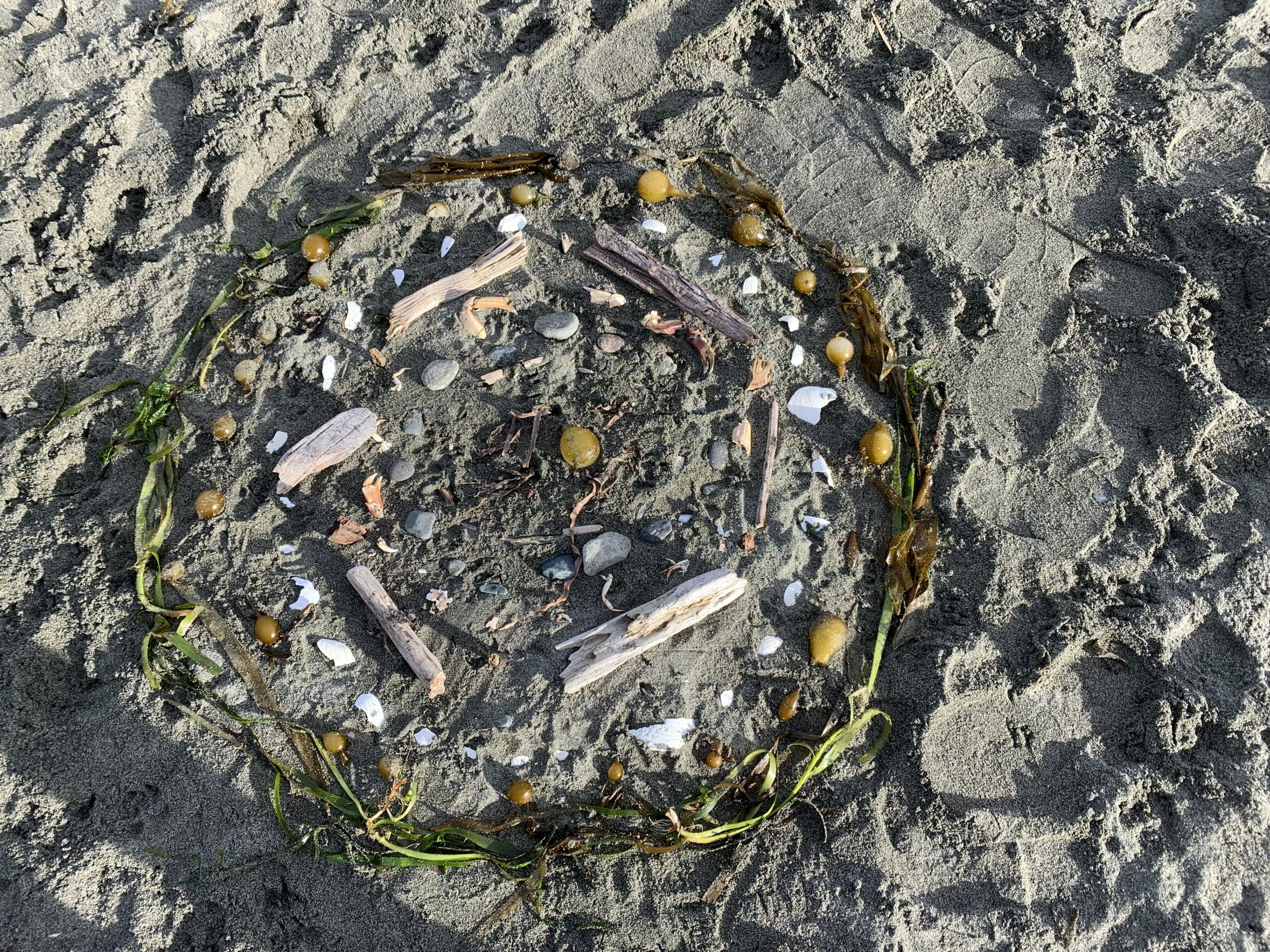
When one student is feeling emotionally dis-regulated, grounding techniques are a useful tool for quiet regulation. Another approach is breathing techniques which are useful when in the red and yellow zone.
Grounding Techniques:
Breathing Technique:
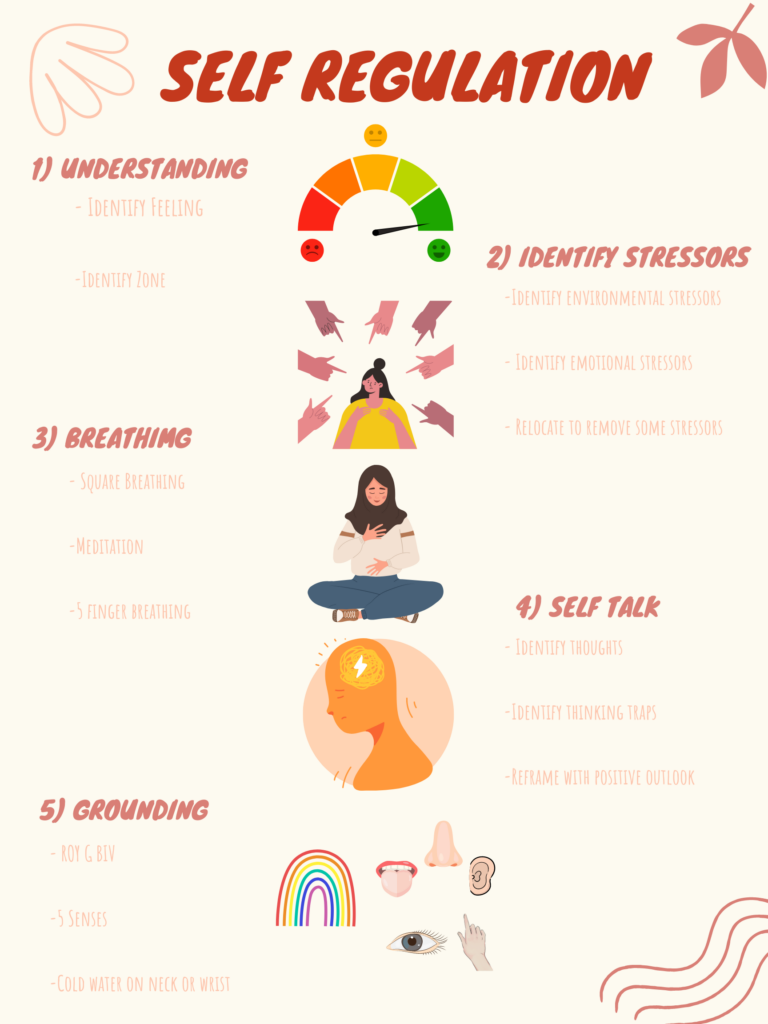
There are two parts of mindfulness, understanding the emotion and understanding the cause of the emotion. This Infographic lays out the steps to identification, understanding, and regulation.
Identifying stressors is a crucial component of managing them. Within a school environment there are a plethora of stress inducers (LD@school., 2018.) such as tests, illness and bullying. Those who experience stress are at risk of developing larger symptoms such as anxiety, low mood, and anger. The best way to address stress is creating trusting relationships with students (LD@school., 2018.)
There are many environmental stressors that can effect the whole classroom such as a gloomy day, a loud noise, and direct sunlight. Students can also have individual stressors based on personal experiences and preferences. Students with learning disabilities often have increased fear of embarrassing themselves or falling behind (LD@school., 2018). Other social stressors are bullying, lack of friends, failure, and poor grades. It is crucial to address stressors as soon as possible for increased success. In this activity try and identify all 11 stressors within this classroom.

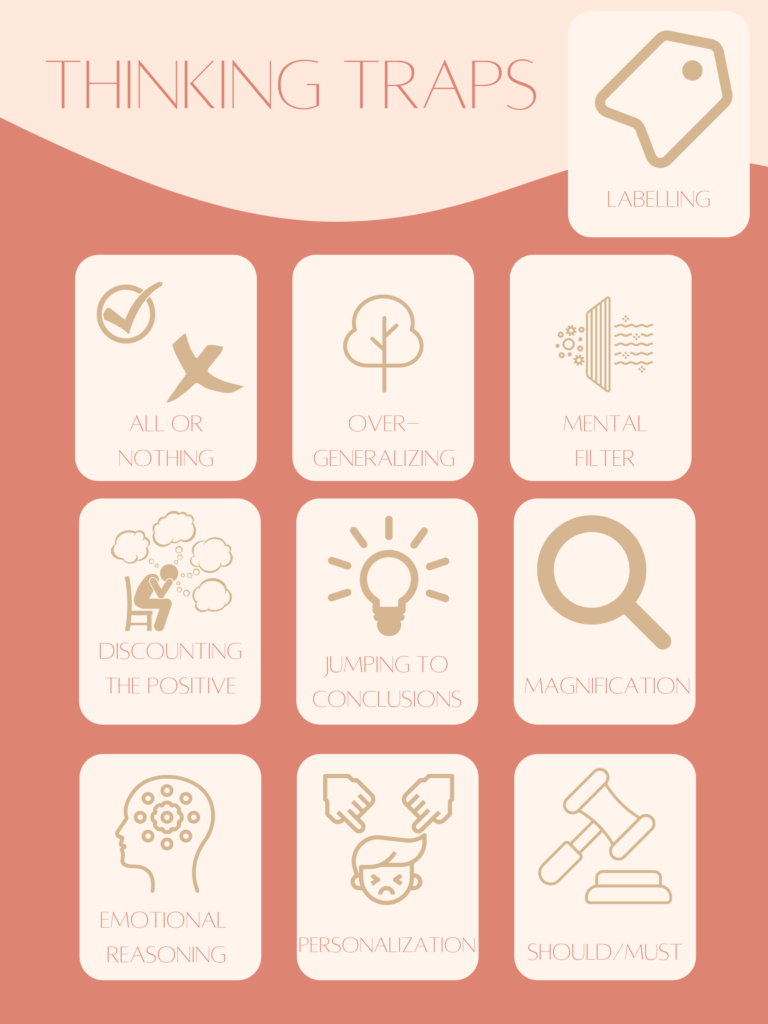
One approach to addressing stressors is rooted in CBT therapy and identifies and works through mental thinking traps. A mental thinking trap is a pattern your brain follows when feeling big emotions. Understanding this pattern and acknowledging the thinking trap can help you move forward to longer lasting regulation and provide you with more successful mindfulness approaches.
When we use strategies including the zones of regulation, regulating activities and identifying our brains patterns we create a tool box for our students. These tools are preventative and with increased exposure become part of our everyday routine. Creating a positive way for students to deal with emotions while building understanding of our body’s reactions is important for long term growth. We can regulate our zones by being gentle with ourselves and our reactions and use the tools we have been provided.

Before you finish test your knowledge! See what you need more practice with and what feels comfortable. Remember we are all on our own learning journey and new things take time! Also make sure you are in the Green Zone!
https://quizizz.com/admin/quiz/62abf8d7255536001d958fd1?source=quiz_page
Creation Process:
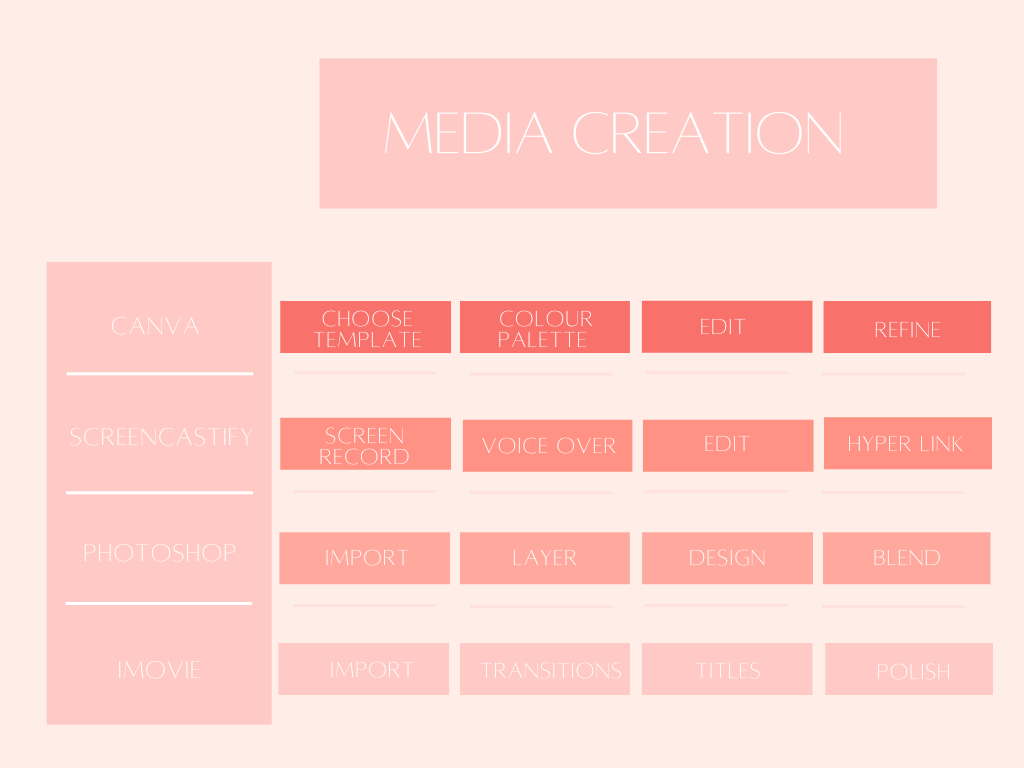
Creating Media was enjoyable, it provided a creative way to represent our thoughts. Canva allowed us to add colour, complex design, and pictures to our blog while Screencastify perfectly linked audio and video. Both were very user friendly and provided our readers with visual, oral, and pictoral representations of content. Photoshop allowed seamless images to be created and iMovie allowed addition of music, and transitions to edited video clips. The media resource was created with Phtotshop, by blending images of items that indicate stress as well as visual cues in the form of actions from students. This resource uses the Gamification principles by allowing for the audience to practice identifying first hand stressors based on their knowledge and understanding of the material. We also made a quiz on Slido which was simple to navigate and uploaded videos to YouTube which could be done from iMovie.
Utilizing Course Content:
Each topic is separated with conversational media following the segmenting and personalization principals. The organization of the blog and the visual aids follow the signalling and coherence principal.
Referencing Post 2 (Richards, 2022.)
Slideshows, Slido, and finding activities follow the active learning model. Active learning boosts retention and aids dual coding theory. This theory was used by teaching the information, providing alternate media, and lastly testing recall and application of material. Referencing Post 3 (Richards, 2022.)
All media included follows the principals of design using specific colour palettes, intentional spacing, balance and symmetry, proximity of content, repetition of elements, contrast of colours, hierarchy of importance, and alignment of sections. Referencing Post 4 (Richards, 2022.)
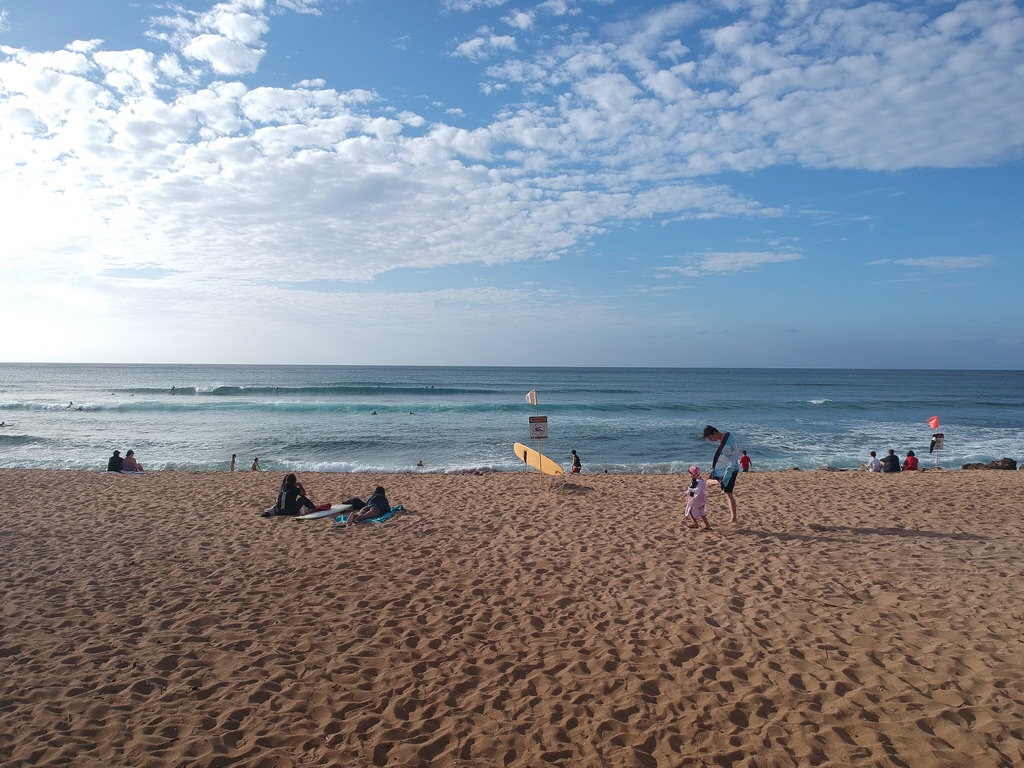
The importance of equal access is imperative in universal learning design and was stressed in our mindfulness activities. Referencing Post 5 (Richards, 2022.)
Referencing Post 5 (Richards, 2022.)
The multimedia principle used to create the slideshow is Mayer’s pre-training principle as these zones are the groundwork for learning to self-regulate (DeBell, 2019).
Redefining Teaching with Tech:
Referencing Post 6 (Richards, 2022.)
- Interactive comment sections
- Live feedback
- Access from anywhere
- Demonstration videos available anytime
- Ready to use guided meditation
- Collaborative Word Walls
References
DeBell, A. (2019, December 11). How to Use Mayer’s 12 Principles of Multimedia Learning. Water Bear Learning. http://waterbearlearning.com/mayers-principles-multimedia-learning/
Pathway2success. (2018, November 5). 15+ Strategies to help build self-regulation skills. Pathway 2 success. https://www.thepathway2success.com/15-strategies-to-help-build-self-regulation-skills/
Identifying and addressing stressors in your classroom. LD@school. (2018, June 6). Retrieved June 18, 2022, from https://www.ldatschool.ca/identifying-addressing-stressors/
Kuypers, Leah. 2011. The Zones of Regulation. https://zonesofregulation.com/index.html
Kuypers, Leah. 2021. All the Zones are OK! Tips for Managing the Zones You’re In. Social Thinking. Retrieved from https://www.socialthinking.com/Articles?name=all-the-zones-are-ok
Richards, L. (2022a, May 3). 2nd Topic 337 (A01) Summer ’22 – What is Multimedia and Interactive Learning – EDCI 337: Interactive and Multimedia Learning. Educational Technology at the University of Victoria. https://edtechuvic.ca/edci337/2022/05/03/2nd-topic-337-s01-summer-22-what-is-multimedia-and-interactive-learning/
Richards, L. (2022b, May 6). 3rd Topic EDCI 337 (A01) Summer – How Do We Learn? – EDCI 337: Interactive and Multimedia Learning. Educational Technology at the University of Victoria. https://edtechuvic.ca/edci337/2022/05/06/3rd-topic-edci-337-a01-summer-how-do-we-learn/
Richards, L. (2022c, May 22). 4th Topic EDCI 337 [A01] Summer: Design of Multimedia Learning Objects and Artifacts – EDCI 337: Interactive and Multimedia Learning. Educational Technology at the University of Victoria. https://edtechuvic.ca/edci337/2022/05/22/4th-topic-edci-337-a01-summer-design-of-multimedia-learning-objects-and-artifacts-graphics-infographics/
Leave a Reply